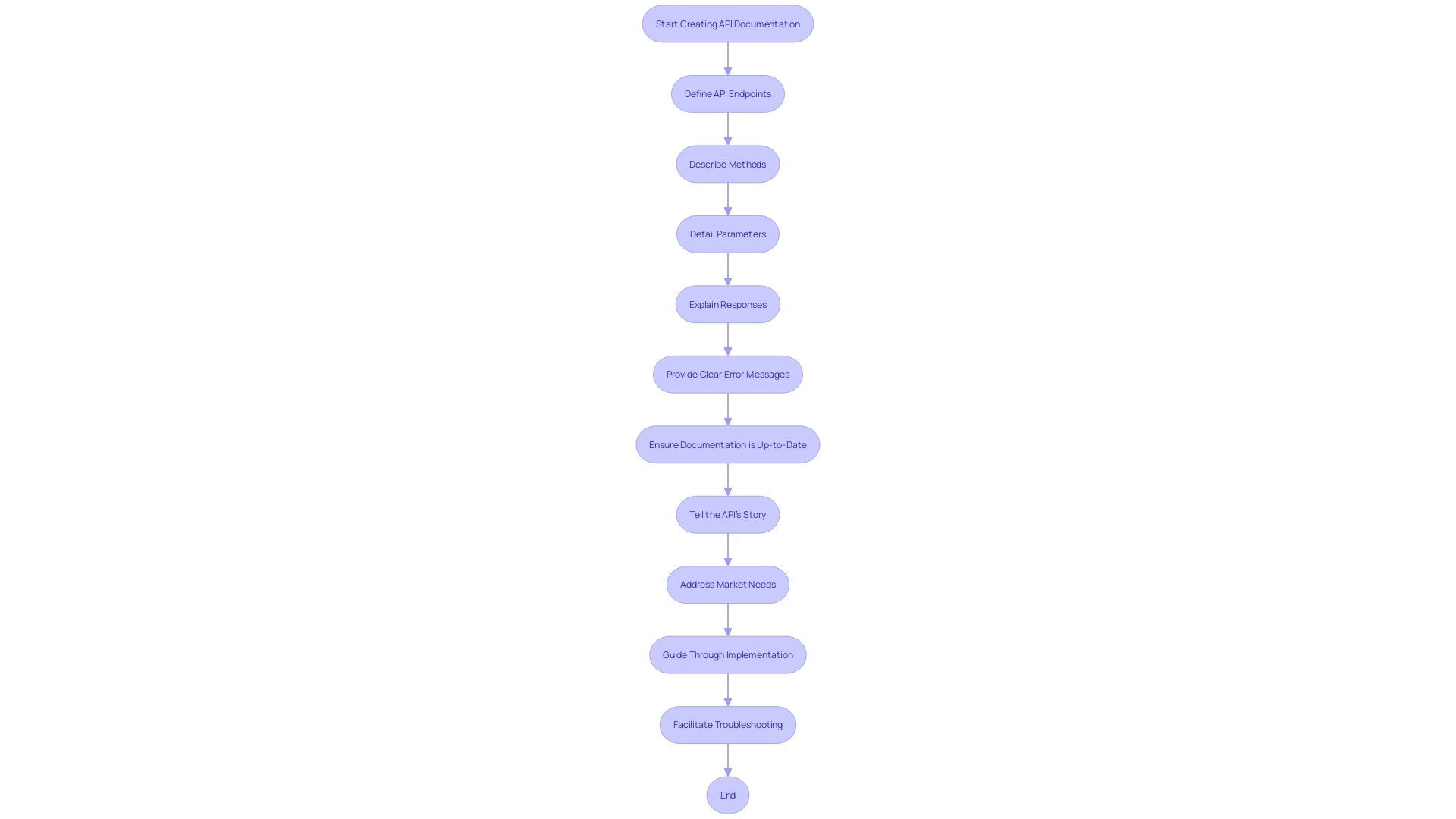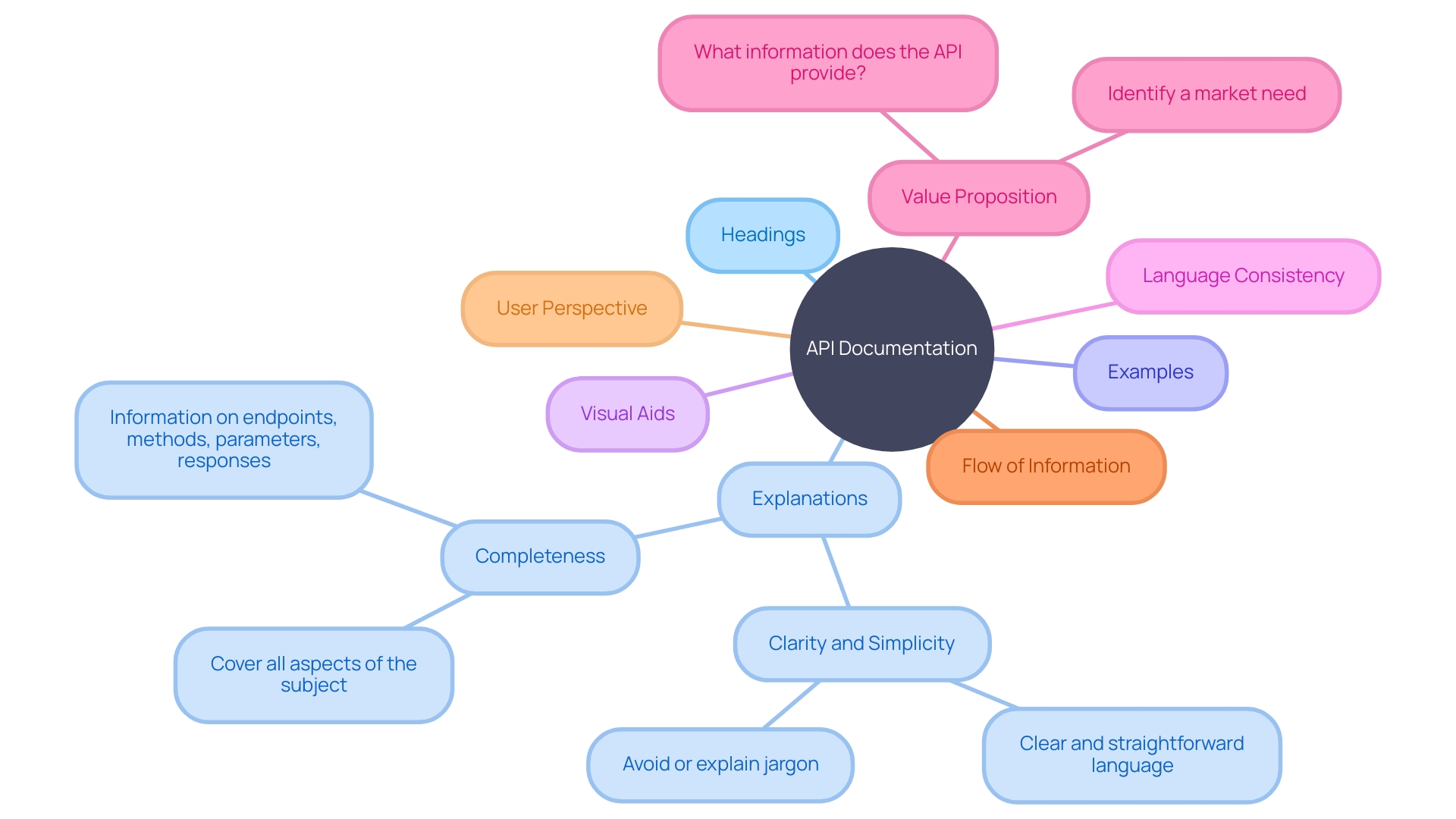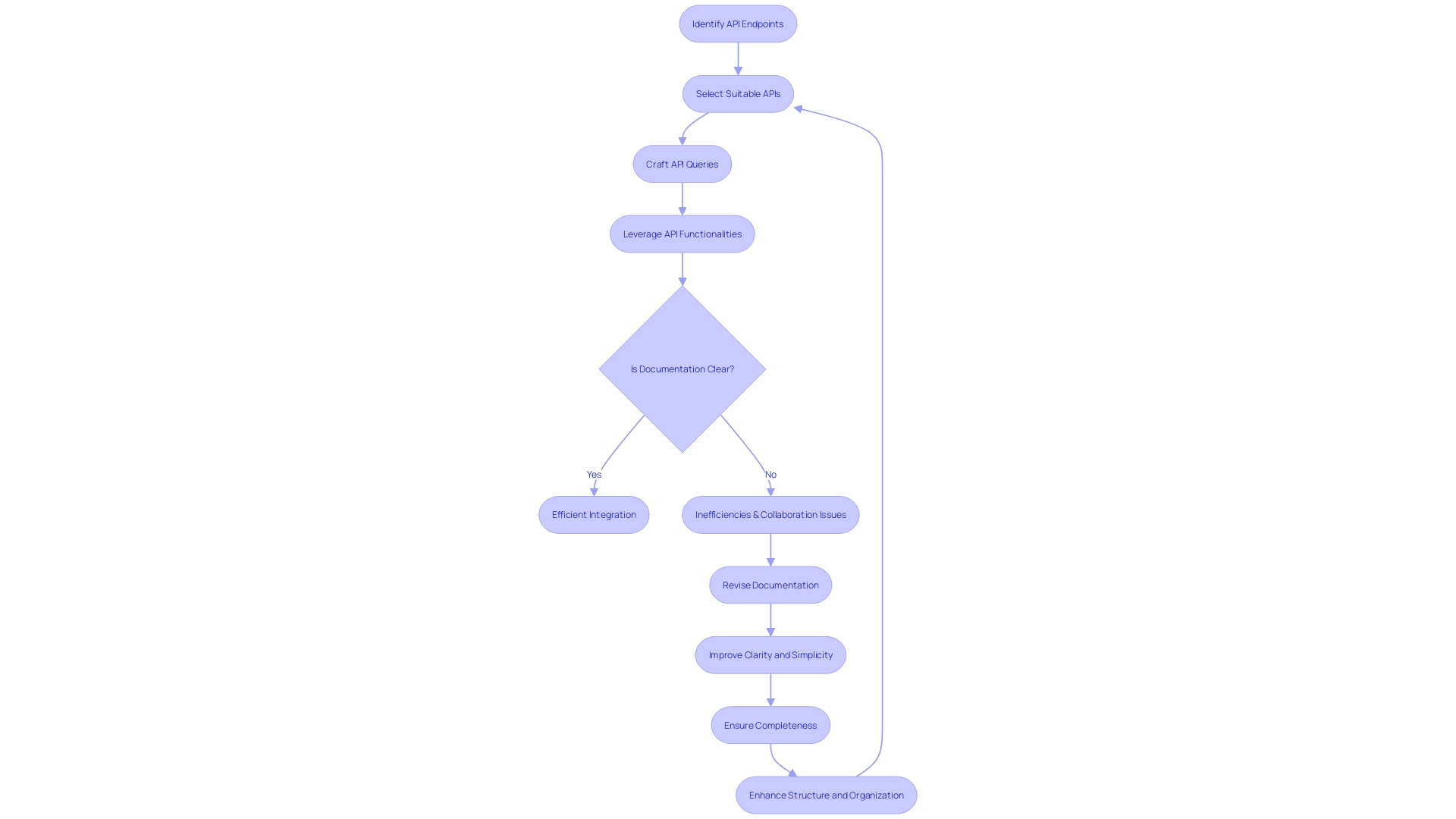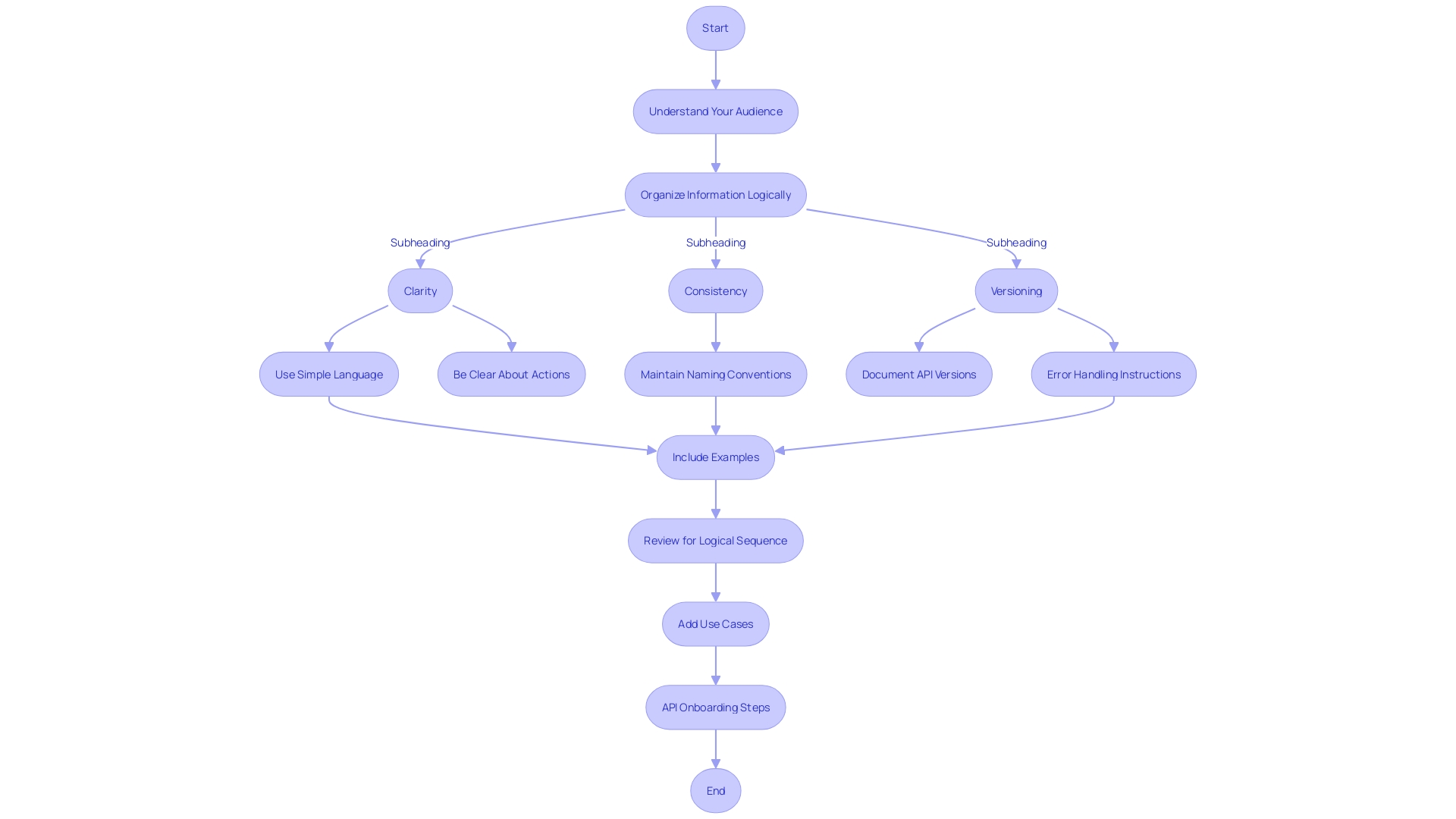Introduction
In the world of software development, API documentation plays a crucial role in guiding developers on how to effectively use an application programming interface (API). Just like a user manual helps us understand how to operate a device, API documentation provides a comprehensive guide on the API's functionalities, endpoints, parameters, and response formats. Without clear documentation, developers can find themselves lost in complex functions and code, struggling to work on their projects.
In this rapidly evolving digital landscape, where efficiency and productivity are prioritized, the quality and clarity of API documentation have never been more critical. In this article, we will explore the importance of API documentation, different types of documentation, best practices for writing it, tools for creating it, examples of well-documented APIs, and common mistakes to avoid. So, let's dive in and discover how effective API documentation can enhance developers' productivity and efficiency.
What is API Documentation?
Just as a user manual is essential for understanding how to operate a laptop, API documentation plays a similar role in the world of software development. It is the linchpin that details the use of an application programming interface (API), acting as a comprehensive guide for developers. This documentation covers the API's functionalities, endpoints, parameters, and response formats, ensuring that those who use it can do so effectively.
Without it, developers might find themselves lost in a sea of complex functions and lengthy code, struggling to understand and work on the project.
API documentation facilitates a clear understanding of the software's design, architecture, and functionality, providing a vital roadmap for development. It sets expectations and ensures all stakeholders, from end-users to administrators, have the necessary information to interact with the software product. For instance, TotalEnergies Digital Factory relies on APIs to modernize legacy systems, emphasizing the importance of tailored digital solutions to operational needs.
In the context of API documentation, clarity is paramount. Avoiding overly technical jargon makes the content accessible not just to seasoned programmers but also to novices. It's a balancing act, focusing on the 'why' as much as the 'what,' to provide a user-friendly experience that stands up to the customer-centric view of quality espoused by experts like Peter Drucker.
In a rapidly evolving digital landscape where API-as-a-Service (APIaaS) is gaining traction for its efficiency and resource optimization, the clarity and quality of API documentation have never been more critical, even as organizations weigh the trade-offs between efficiency and control.
Importance of API Documentation
API documentation is the cornerstone of developer experience, akin to a user manual for a new laptop. Just as a manual guides you through the setup and use of your device, API documentation introduces developers to the interface and instructs them on how to effectively tap into its capabilities. Consider the API as a tool for software interaction, with the documentation being the roadmap to its utilization.
Good API documentation should illuminate the path for developers, offering clarity from the very first encounter. It must answer the pressing question: how can one quickly start interacting with the API to reap its benefits? This initial clarity is vital, as it sets the tone for the user's journey.
Documentation should cover various aspects, including endpoints, methods, parameters, and responses, ensuring completeness and aiding in seamless integration and troubleshooting.
Moreover, maintaining up-to-date documentation is imperative. Outdated or unclear documentation can lead to confusion and hinder productivity. For instance, Infobip's API reference wisely includes links to more complex concepts, aiding beginners and providing an informative experience from the start.
Error messages, too, should be viewed as an extension of documentation, offering immediate guidance and reducing friction.
Ultimately, the goal is to craft documentation that's not only instructive but also engaging. It should tell the API's story, addressing a market need and helping developers visualize how the API can solve their specific problems. By focusing on the 'why' as much as the 'what,' documentation becomes a powerful tool for developers, ensuring they can harness the full potential of an API with confidence and clarity.

Types of API Documentation
API documentation is a critical resource that serves as a guide for developers, outlining how to effectively implement and troubleshoot an API. It should be clear, complete, and well-structured, ensuring that all aspects of the API are covered, including endpoints, methods, parameters, and responses. Various documentation types exist to meet different needs.
Manually-written documentation, though prone to becoming outdated, provides a basic narrative that describes the implementation. On the other hand, a code-first approach uses domain-specific languages (DSLs) to automatically generate documentation from API controllers, ensuring the documentation stays in sync with the API's current state.
For a comprehensive understanding, conceptual topics are essential, answering the primary question: what information does the API provide? This is particularly important as APIs are numerous and varied. A well-told 'product story' can distinguish an API by identifying and solving a specific market need.
Moreover, just as a user manual is fundamental for operating a laptop, API documentation is indispensable for understanding and utilizing an API. It functions as a 'user manual' for developers, aiding them in connecting software tools effectively.
The creation of API documentation is facilitated by tools designed to help developers produce readable and maintainable documents. The choice of tool is crucial and can be challenging given the multitude of options available.
In summary, API documentation comes in different formats such as code examples, reference guides, tutorials, and interactive experiences. Each serves a unique purpose and caters to varying developer requirements, from quick reference to in-depth learning. The ultimate goal is to provide clarity, simplicity, and thoroughness to support the developers as they integrate and work with the API.
Best Practices for Writing API Documentation
Crafting API documentation requires meticulous attention to detail and a user-focused approach. The architecture of your documentation should echo the structure of a well-organized manual, guiding users with clear headings, concise explanations, and practical examples. By breaking down the information into digestible sections, each addressing a specific feature or aspect of your API, you provide a roadmap that eases the learning curve for developers.
Visual aids can play a pivotal role in enhancing comprehension, serving as a bridge between abstract concepts and practical implementation. These can range from diagrams illustrating workflow to code snippets that can be directly implemented by the user. Such elements not only elucidate the text but also offer tangible insights into the API's capabilities.
Consistency in language and terminology is paramount to prevent confusion. Avoid technical jargon where possible and opt for simplicity in your descriptions—remember, your audience may include non-native English speakers or those new to programming. Active voice can be a powerful tool to clarify the subject performing an action, but its use should be balanced with readability.
Remember, the essence of your API's documentation is to narrate the product's story, to answer the fundamental question: 'What can this API do for me?' Delineate the value your API brings to the table by pinpointing a market need it addresses. Real-life use cases can ground the documentation, making it relatable and demonstrating its practical utility.
The flow of information should be logical, building from the basics to more complex topics, ensuring that readers can follow along without feeling lost. Reflect on the reader's perspective—what questions might they have at any given point? Address these preemptively with clear, structured answers and examples that mirror a side-by-side conversation.
In the landscape of software development, where tools like GitHub Copilot are revolutionizing productivity through AI pair-programming, the clarity and efficiency of API documentation have never been more crucial. Studies have shown that such tools can significantly reduce task time and cognitive load while improving product quality and learning. Your documentation should aim to offer a similar level of support, acting as an indispensable companion that empowers users to harness your API's full potential with confidence.

Tools for Creating API Documentation
Crafting effective API documentation is a critical yet challenging task for developers. It's the linchpin that ensures users can easily understand and engage with complex systems and services. As developers, we invest immense effort into creating sophisticated code and products, but without clear documentation, these innovations can go underutilized.
Tools like Swagger, Postman, and OpenAPI have emerged as solutions to this hurdle, offering a streamlined approach to creating user-friendly documentation.
Swagger, a well-known framework, enhances the documentation process with its intuitive UI, making it simpler to describe your API’s structure and design visually. Postman, apart from being a powerful tool for API testing, provides features for documenting API endpoints and sharing collections with others, thereby improving collaboration. OpenAPI, on its part, excels in its ability to describe RESTful APIs with clarity, providing a standard, language-agnostic interface to REST APIs which is both human and machine-readable.
Embracing these tools aligns with the DRY principle—'Don't Repeat Yourself'—allowing developers to define components once and reference them across the documentation. This not only saves time but also ensures consistency and ease of updates. With API documentation tools, developers can focus more on innovation rather than the intricacies of explaining their work.
The right tool can transform documentation from a chore into a conduit for better understanding and utilization of APIs.
Examples of Well-Documented APIs
Understanding the intricacies of Application Programming Interfaces (APIs) is crucial in our digitally-driven world, as they form the backbone of many services we use daily. APIs facilitate the interaction between disparate software components, employing internet and web protocols for seamless message exchanges. Notably, web APIs, which Salesforce first introduced in 2000, have become pivotal, especially in cloud, mobile, and machine learning applications.
In the realm of API documentation, clarity, completeness, and structure are paramount. For example, the weather app on your phone relies on APIs to fetch real-time data, making it imperative that the app's developers have precise documentation to integrate these services effectively. Clear and well-documented APIs enable developers to understand and leverage functionalities without unnecessary back-and-forth communication.
A case in point is Chick-fil-A's experience in 2018, where the lack of explicit API contracts led to inefficiencies and heavy collaboration between teams. This scenario underscores the need for comprehensive documentation that details all aspects, including endpoints, methods, parameters, and expected responses. It also highlights the importance of simplicity in language to avoid confusion and the necessity of structured documentation, beginning with a table of contents and flowing through introductions to main content sections.
Moreover, news APIs illustrate the value of well-documented APIs. Media monitoring companies use news APIs to track brand mentions, competitive intelligence, and market trends. For successful implementation, selecting a suitable API and crafting precise queries based on representative keywords is essential.
This meticulous approach to documentation and usage is reflective of the broader significance of APIs in our interconnected digital ecosystem.

Common Mistakes in API Documentation
API documentation is the roadmap that guides developers through the intricacies of integrating and utilizing an API effectively. To avoid common documentation pitfalls, it's important to provide clear, structured, and complete information. Start by categorizing your documentation into logical sections, each with detailed subheadings.
For instance, key components like 'ProductFeature' should be well-defined, illuminating its role in linking products and their features, while 'Subscription' should clearly describe how it represents recurring customer purchases.
To maintain clarity, use simple language and avoid unnecessary jargon. When technical terms are required, offer clear explanations. This approach aligns with expert insights highlighting the importance of starting with a straightforward overview that quickly informs new users about how to engage with the API, as well as serving as a narrative that communicates the unique benefits and solutions provided by your API.
When documenting features such as 'Price' or 'Product', ensure that your descriptions are precise, reflecting the product's unit price, currency, and billing cycle. Consistency in naming conventions is paramount, as it prevents confusion and errors in implementation.
Versioning is another critical aspect of effective documentation. It not only facilitates updates and maintenance but also helps developers understand the evolution of the API. Additionally, providing comprehensive error handling instructions is essential for troubleshooting and enhancing the user experience.
As APIs form the backbone of digital experiences, the robustness of an API is contingent upon the clarity and comprehensiveness of its documentation. The goal is always to foster understanding, implementation, and troubleshooting, thereby empowering developers to fully leverage the API's capabilities.

Conclusion
In conclusion, API documentation is crucial for guiding developers in effectively using an API. Clear documentation improves productivity and efficiency by providing a comprehensive understanding of the API's functionalities, endpoints, parameters, and response formats.
Good API documentation enhances the developer experience by serving as a user-friendly guide from the start. It should cover all aspects of the API, including endpoints, methods, parameters, and responses, and should be regularly updated to avoid hindering productivity.
Different types of API documentation exist, such as manually-written documentation and code-first approaches using DSLs. Conceptual topics are essential for a comprehensive understanding, and tools like Swagger, Postman, and OpenAPI streamline the documentation process.
Best practices for writing API documentation include clear structure, concise explanations, and practical examples. Visual aids and consistent language enhance comprehension. The documentation should tell the API's story, addressing market needs and providing real-life use cases.
Well-documented APIs exemplify the importance of clarity, completeness, and structure. They enable developers to understand and leverage functionalities without unnecessary communication. Avoiding common mistakes, such as providing clear and structured information and using simple language, is crucial for effective documentation.
In conclusion, effective API documentation is essential for developers to work efficiently. By following best practices and using the right tools, developers can create documentation that enhances the developer experience and allows them to harness the full potential of an API with confidence.
Start using Kodezi's API documentation tools today and enhance your developer experience!
Frequently Asked Questions
What is API documentation?
API documentation is a comprehensive guide that details the use of an application programming interface (API). It covers the API's functionalities, endpoints, parameters, and response formats to allow developers to understand and work effectively with the software.
Why is API documentation important?
API documentation is vital as it functions like a user manual for developers, introducing them to the API and guiding them on how to effectively use it. It provides clarity, sets expectations, and ensures seamless integration and troubleshooting, which is essential for productivity and the success of software projects.
What should API documentation include?
Good API documentation should include information about endpoints, methods, parameters, responses, and error messages. It should also offer conceptual topics that answer what information the API provides and tell the API's story by addressing a market need.
How can API documentation remain user-friendly?
To remain user-friendly, API documentation should avoid overly technical jargon, be organized with clear headings and concise explanations, include practical examples and visual aids, and maintain consistent language and terminology.
What are some types of API documentation?
API documentation comes in various forms such as manually-written guides, automatically generated documentation using domain-specific languages (DSLs), code examples, reference guides, tutorials, and interactive experiences.
What are the best practices for writing API documentation?
Best practices include ensuring the documentation is clear, complete, and well-structured, using visual aids, maintaining consistency in language, telling the product's story, and logically organizing information from basic to complex topics.
Which tools can help create API documentation?
Tools that help create API documentation include Swagger, Postman, and OpenAPI. These tools provide user-friendly interfaces, features for documenting APIs, and standardized formats that are both human and machine-readable.
Can you give examples of well-documented APIs?
Examples of well-documented APIs include those used by weather apps for real-time data and news APIs for media monitoring. These APIs demonstrate the importance of clear, complete, and structured documentation.
What are common mistakes in API documentation?
Common mistakes include lack of clarity, structure, and completeness. Overusing jargon, inconsistency in naming conventions, not addressing versioning properly, and insufficient error handling instructions are also pitfalls to avoid.
How does API documentation contribute to efficient software development?
API documentation contributes to efficient software development by providing a clear roadmap for development, setting expectations, and ensuring that developers have the necessary information to interact with the software product without unnecessary back-and-forth communication.




